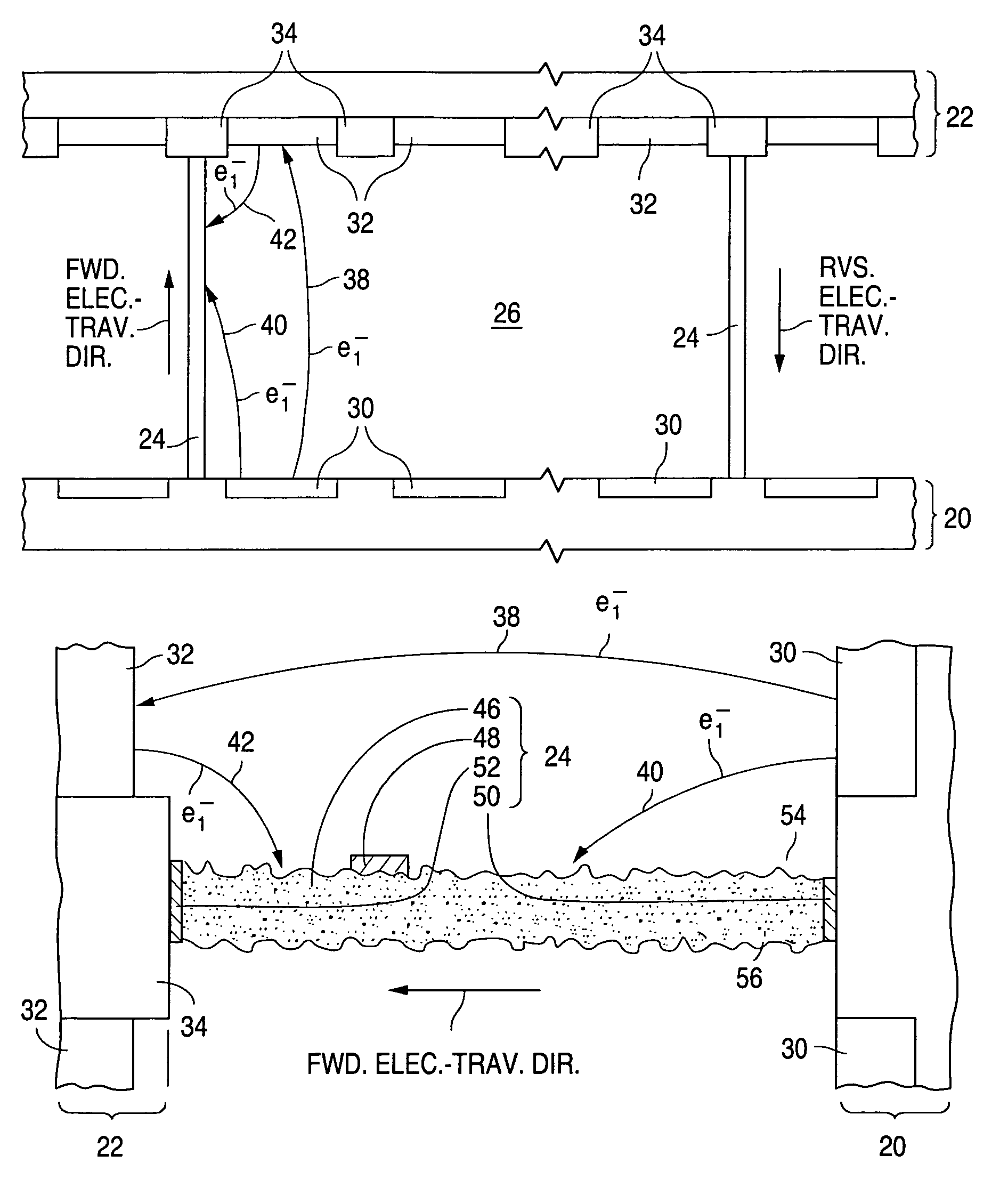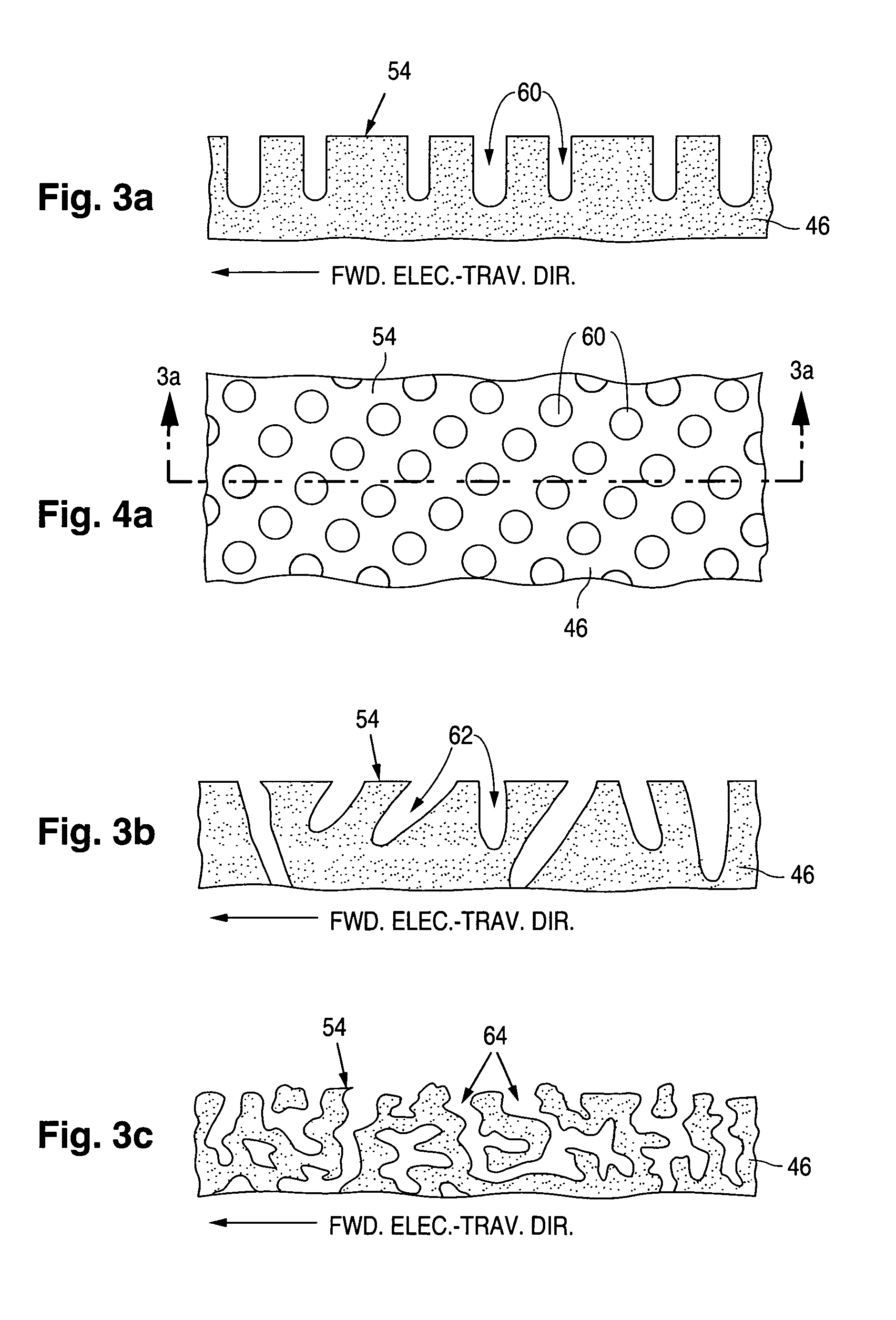Fabrication of flat-panel display having spacer with rough face for inhibiting secondary electron escape
a technology of spacer and secondary electron escape, which is applied in the manufacture of electrode systems, tubes with screens, electrode systems, etc., can solve the problems of affecting the flow of electrons through the display, deteriorating the image produced on the viewing surface, and becoming electrically charged, so as to reduce the buildup of positive charges on the spacer, easy control of manufacturing techniques, and simple configuration
- Summary
- Abstract
- Description
- Claims
- Application Information
AI Technical Summary
Benefits of technology
Problems solved by technology
Method used
Image
Examples
Embodiment Construction
[0051]General Display Configuration An internal spacer system for a flat-panel CRT display configured and fabricated according to the invention is formed with spacers that have rough faces for reducing spacer charging during display operation. Primary electron emission in the present flat-panel CRT display typically occurs according to field-emission principles. A field-emission flat-panel CRT display (often referred to as a field-emission display) having a spacer system configured according to the invention can serve as a flat-panel television or a flat-panel video monitor for a personal computer, a lap-top computer, or a workstation.
[0052]In the following description, the term “electrically insulating” (or “dielectric”) generally applies to materials having an electrical resistivity greater than 1012 ohm-cm at 25° C. The term “electrically non-insulating” thus refers to materials having an electrical resistivity of up to 1012 ohm-cm at 25° C. Electrically non-insulating materials ...
PUM
 Login to View More
Login to View More Abstract
Description
Claims
Application Information
 Login to View More
Login to View More - R&D
- Intellectual Property
- Life Sciences
- Materials
- Tech Scout
- Unparalleled Data Quality
- Higher Quality Content
- 60% Fewer Hallucinations
Browse by: Latest US Patents, China's latest patents, Technical Efficacy Thesaurus, Application Domain, Technology Topic, Popular Technical Reports.
© 2025 PatSnap. All rights reserved.Legal|Privacy policy|Modern Slavery Act Transparency Statement|Sitemap|About US| Contact US: help@patsnap.com



